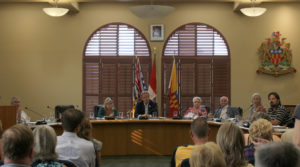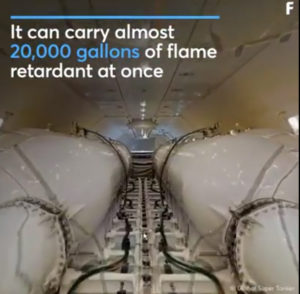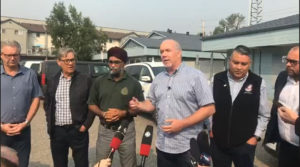Langford urges province to get more airborne firefighting equipment
by Mary P Brooke ~ West Shore Voice News

With resource requirements at full tilt during BC’s summer wildfire season, both last year and this year some fires take longer to get to while awaiting either more personnel or more aircraft (planes or helicopters) that can drop fire retardant and water on smaller fires to help prevent rapid spread.
There are many reasons to get the wildfires under control sooner. In the last few days especially, the continued risk to human health from high-risk levels of smoke in the air throughout most of BC has become more evident. People are more frequently staying indoors to avoid direct exposure. Costs are rising for increased use of air conditioners and other equipment for staying cool. Economic impacts include people cancelling events, appointments, or even going to work.
The Air Quality Health Index this evening at 6 pm was at 10+ (Very High Risk) in the west shore and Greater Victoria area, and the BC Air Quality website shows that Wednesday August 22 will still see a High Risk level of 8.
And while health officials suggest going to a library, rec centre or shopping mall to find some air conditioned and filtered air, this does ultimately become a cost for people and communities. It takes money to manage those types of facilities and many people who go there for respite are not necessarily contributing in a direct economic way to the increased overhead on facilities.

At the City of Langford council meeting on Monday night, August 20, Mayor Stew Young and council decided to prepare a letter to the province and the premier about investing in more planes that can control fire growth from the air.
Earlier active intervention with retardant/water in wildfire season can, overall, contribute to reducing the costs and risk to frontline firefighting teams, free up personnel to handle more urgent areas of firefighting and community support, and see that more of the natural environment is less affected by devastation in these hot climate-change summers.
Provincial resources are always best spent wisely, and taking this pro-active approach to holding back the spread of wildfire spread is justified by the investment in more planes – whether owned by the province or paid on contract, says the Mayor of Vancouver Island’s fastest-growing city.
So why is Langford speaking up about this? “I know it’s worse in other areas and we are sending some officers police and fire to areas of the province that are more at risk than our area,” said Mayor Young. “But we are on high alert for air quality. We need more resources in bombers to fight these fires and to have a faster attack before they get bigger,” he told West Shore Voice News.
A customized type of aircraft used this summer in fighting California wildfires could be part of the answer, says Stew Young. The 747 Global Super Tanker can carry 20,000 gallons (75 litres) of flame retardant, which at the speed of 600 miles (965 km) per hour can cover two miles (3.2 km) of land with flame retardant in 15 seconds. The volume carried can be used for up to eight segmented drops. When not used for firefighting it could be utilized for containing chemical or oil spills and can be used to help with reseeding soil. [See video]:
“We wanted the province to know that we encourage an increased firefighting division and support the additional tax cost to keep these fires under control,” said Langford’s mayor. He suggested that during Canadian winters the fire bombers could be used in other areas of the world in the southern hemisphere – so it would need provincial, national and international coordination. “I know every community in the province will support funding as everyone is affected in some way or another.” He itemized the loss of timber, the impact on tourism, and the stress and damage to communities and wildlife as too big a loss over the last few years to not warrant some immediate changes in how BC fights and manages forest fires.

Langford Fire Chief Chris Aubrey says that weather conditions on Vancouver Island can expect to be contributing to four more extreme summer wildfire seasons. Data assessed by the National Oceanic and Atmospheric Administration (NOAA) in the USA shows below-normal precipitation and above-average temperatures for the next four years, said Chief Aubrey.
Chief Aubrey says “big fires start small” and that last year 100 fires started in one day in BC. And in the case of the fire at Zeballos in northwest Vancouver Island (which is contributing to the high levels of smoke on Vancouver Island and beyond), that “they didn’t get to it fast enough” because of a limited supply of resources like water bombers.
Back to the Langford current news page | Back to the Sustainability page | Back to the main page

